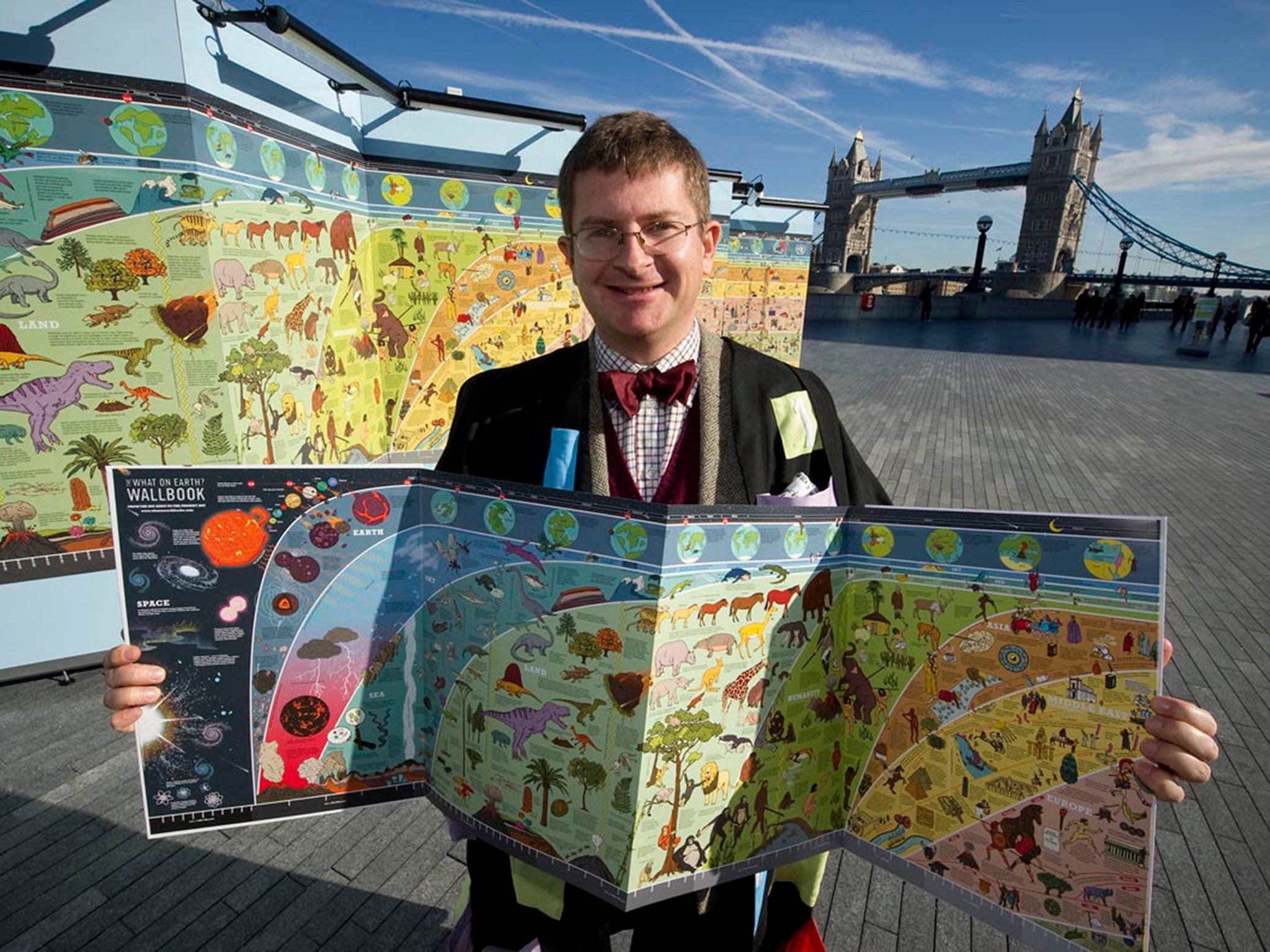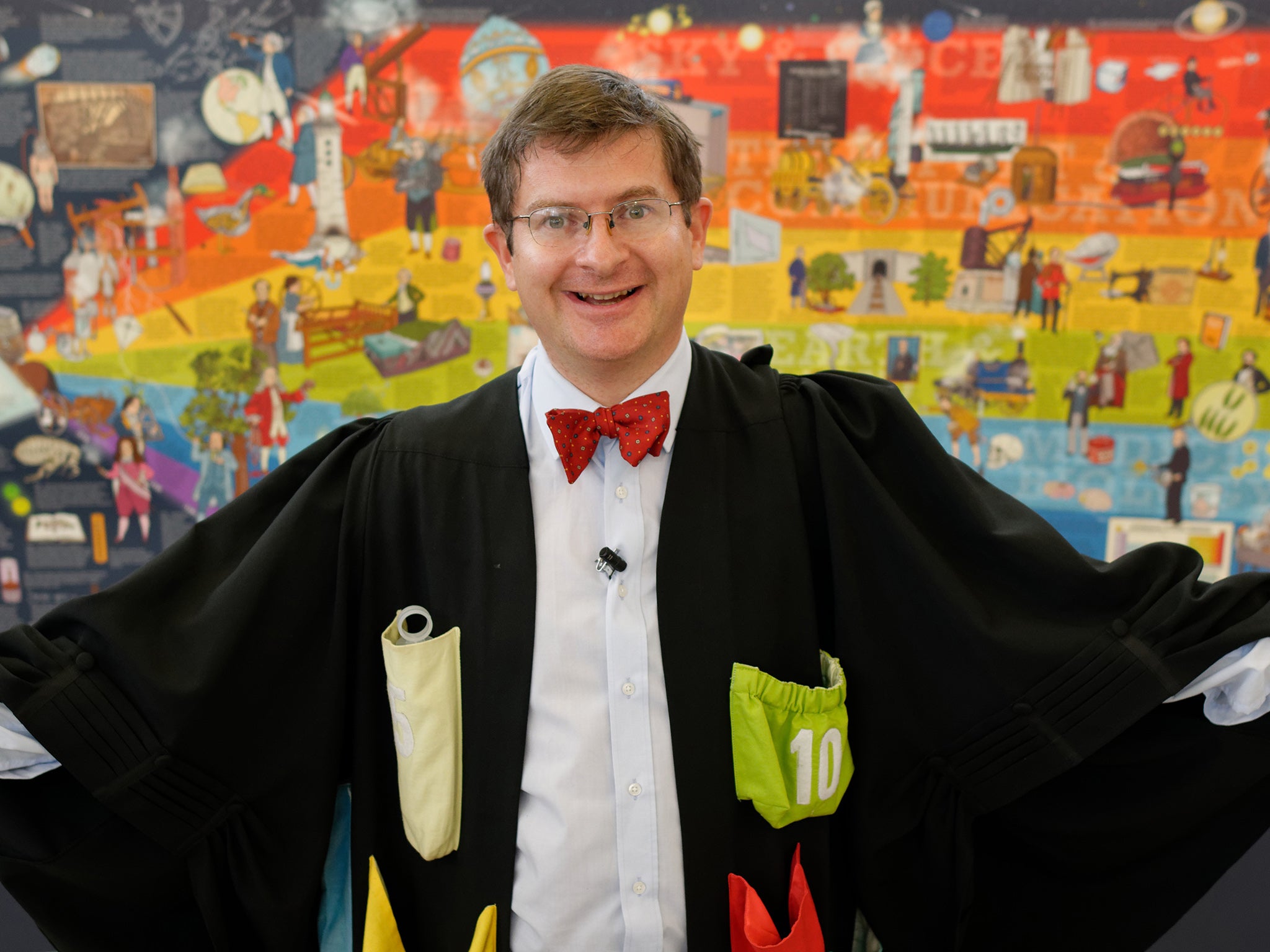World history author Christopher Lloyd: How I am using art to connect the dots of the past into a coherent narrative
Lloyd is launching a new range of timeline stickerbooks, to present a more interconnected view of the world to young people, their parents and teachers

Your support helps us to tell the story
From reproductive rights to climate change to Big Tech, The Independent is on the ground when the story is developing. Whether it's investigating the financials of Elon Musk's pro-Trump PAC or producing our latest documentary, 'The A Word', which shines a light on the American women fighting for reproductive rights, we know how important it is to parse out the facts from the messaging.
At such a critical moment in US history, we need reporters on the ground. Your donation allows us to keep sending journalists to speak to both sides of the story.
The Independent is trusted by Americans across the entire political spectrum. And unlike many other quality news outlets, we choose not to lock Americans out of our reporting and analysis with paywalls. We believe quality journalism should be available to everyone, paid for by those who can afford it.
Your support makes all the difference.Ten years ago I conducted a most interesting experiment.
During a family camping trip in Italy, I discovered that, despite having a double first class history degree from Cambridge and a job for 10 years as the science correspondent of a national newspaper, I had no idea as to the age of the planet earth.
To say I was shocked, ashamed – disappointed in myself – would be an understatement.
Do you know old she is? In an effort to recover from this debacle of ignorance, I set about asking other adults to see if they knew. To my relief, I was not alone. About 95 per cent of the respondents in my self-reassurance-seeking survey were as clueless as me. And as for school teachers – I made a special bee-line for them – I found they were just as ignorant as me about what must surely be one of the most basic foundational facts of all modern human knowledge.
That experience opened my eyes to what I now regard as one of the biggest crimes of our traditional education system – unreformed as it mostly is from Victorian times.
Schools traditionally present a highly fragmented view of knowledge. It is split into so many separate subjects, timetables, and syllabuses that the image of the world imposed on young people is about as useful as is a pane of shattered glass to someone driving on a motorway.
Natural curiosity – our most basic and powerful learning instinct – has little chance of success when a barrage of obstacles, from school bells to learning objects, and from curriculum subject teachers to exam boards, all serve to shatter knowledge into an infinity of tiny pieces.
As a result, connecting the dots of the past into a coherent narrative becomes almost impossible, with the result that children may often find themselves hating history but loving science, which is absurd when you consider that science is really the narrative story of how people have changed and reshaped the world over the last 10,000 years using their brains (problem solving) and hands (engineering).
Even worse is how this institutionalised fragmentation manifests itself in individual boredom and frustration. “What’s the point of studying something that has no narrative connections to my life” – that’s a question any self-respecting teenager is bound to ask sub-consciously, if not aloud. I strongly suspect that our obsession with fragmenting of knowledge leads directly to many pupils’ disengagement with learning.
This is a catastrophe. As a result of our obsession with silo-driven education, adult scientists generally hate talking to historians (and vice versa). People with dramatic communications skills seldom stray into the world of non-fiction. Religious education is isolated from history – possibly a reason why fundamentalism is on the rise in Britain today – and psychology, perhaps the subject most informative about the evolution of basic human behavior, is almost completely ignored.
My little experiment provoked me into re-evaluating my own education and I became determined to do everything I possibly could to help reconnect knowledge together. We are a storytelling species – narratives are our most natural learning paradigm – so the story of the history of the world (which began about 4.6 billion years ago, by the way) must surely be the most important of all.

The Independent newspaper gave my efforts a huge boost. By serialising my first world history book – What on Earth Happened? – into a series of booklets published over 14 days (it was called The World – A Pocket History) my attempt at creating an interconnected cross-curricular narrative reached a gratifyingly wide consumer audience. Since then, the book has been translated into 15 languages, most recently into Japanese, where it has become a top seller and even turned into a weekly family TV show for parents and children.
Traditional books are fine for people who like to read narratives stretching to a door-stopping 180,000 printed words. But what’s to be done for those who get a sinking feeling each time they open the pages of a long narrative book?
That thought took me, accompanied every step of the way by the illustrator Andy Forshaw, into the world of timelines. By removing the spine from a book, we realised we could create a new unfolding canvas that could be stretched out on a floor, or hung on a wall. This created the perfect space for exploring interconnected visual narratives across time.
So we took the history of the world and converted it into a “Wallbook” – a kind of Bayeux Tapestry approach. (William the Conquerer was no fool when it came to marcomms!) It depicts 1,000 of the most significant moments in the story of natural and human history on a 13.7 billion year timeline.
Take a date, such as 1520, and see who is on the throne of England (he had six wives, in case you’re not sure). By running your finger up the book you will find that in Asia people are building their Great Wall, while further across Europe Luther is in hot dispute with the Pope. Lower down and you can see Columbus has just discovered the New World while the Incas are putting the finishing touches to their summer palace in Peru – Machu Picchu. Over in Africa they are building Great Zimbabwe.
A series of five timeline wallbooks has since unfolded: Nature (with the Natural History Museum), science (with the Science Museum), sport, and most recently the complete plays of William Shakespeare (with the Shakespeare Birthplace Trust) complete a series of cross-curricular narratives designed to help young people (and their parents) explore a more interconnected approach to knowledge through curiosity.
Today, we are launching a new format to make this narrative approach accessible to an even younger audience. These are stickerbook timelines (which I am hoping will be just as much fun for adults, by the way, as they are for kids). Each one contains more than 100 stickers grouped into different themes (eg historical events that have taken place on different continents). At the front of the book are several pages of stickers. At the back, a long sheet of paper unfolds into a 1.7m-long timeline containing a series of white spaces indicating where the stickers should be attached and a series of simple captions explaining what each one represents.
Simply by placing the right sticker on the right place on the timeline, a powerful sense of chronology and narrative can be established in an extremely young mind. If a parent is on hand – even better. Learning is amplified through discussion as each sticker takes its place in a multi-coloured gallery of 100 of the most extraordinary events that have shaped our world.
No self-respecting adult or child should be ignorant of our basic global chronology, the uber-narrative that binds us all together. Schools would benefit from a more integrated approach to learning through narrative and context, both of which stimulate the most powerful learning paradigm of all – our innate, natural curiosity.
Join our commenting forum
Join thought-provoking conversations, follow other Independent readers and see their replies
Comments